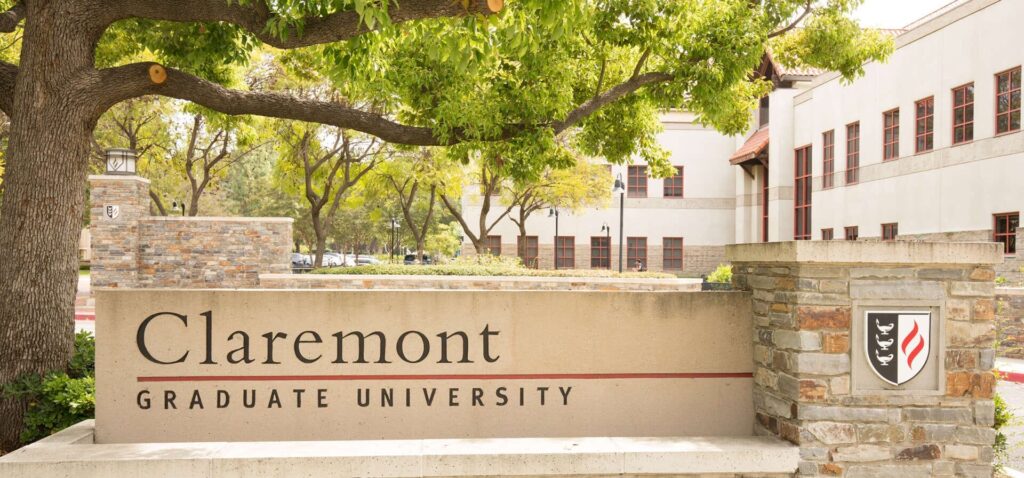A border story, part IV: broken

by Mick Rhodes | editor@claremont-courier.com
Seeking asylum is a human right clearly codified in U.S. and international law, yet untold thousands of asylum seekers remain in limbo at our southern border, many unable to return to their homes due to imminent threats to their lives.
That logjam has for decades been a useful political cudgel for lawmakers looking to score points by being “tough on immigration.” But in March 2020, when the Trump Administration pressured the U.S. Centers for Disease Control and Prevention to issue Title 42, it weaponized the COVID-19 public health crisis to effectively bar asylum-seekers, irrespective of the horrors from which they were fleeing. This exacerbated an already humanitarian crisis-level bottleneck, despite calls from the courts and from within the administration questioning the science and data behind the move.
Candidate Joe Biden made reimagining U.S. immigration policy, including our asylum process, a key component of his campaign. “As president, Biden will finish the work of building a fair and humane immigration system – restoring the progress Trump has cruelly undone and taking it further. He will secure our border, while ensuring the dignity of migrants and upholding their legal right to seek asylum,” read a passage under “immigration” on his campaign website, joebiden.com. So, when he took office in January 2021, many anticipated immediate changes.
But that did not happen.
Title 42 remains in place today, more than two years after President Biden took office, and tens of thousands of asylum seekers linger at our border, stranded at ports of entry throughout Mexico.
According to the Washington Office on Latin America, over the month of February U.S. Customs and Border Patrol officials applied Title 42 to migrants 72,591 times. Since its March 2020 inception, CBP has used the order to expel migrants from the U.S.-Mexico border an astounding 2,687,315 times.
Barring Supreme Court intervention, Title 42 could be lifted as soon as May 11, when the national public health emergency officially ends. And though this would appear to be good news for asylum seekers, there are fears that unless the U.S. government establishes a new system for dealing efficiently and humanely with the anticipated rush of travelers at the border once Title 42 is lifted, chaos could prevail. Recent events, such as the December 2022 rush at the Ciudad Juarez/El Paso border amid sometimes contradictory messaging from the Biden Administration have bolstered critics’ fears.
The Courier traveled to Mexico in early March with former Deputy Director of Community Services for the City of Claremont Dave Roger, and Claremont City Council member and immigration lawyer Jed Leano. We visited Por amor a Dios y a los mas necesitados, una luz de esperanza (“For the love of God and the most needy, a light of hope”), a migrant shelter in the foothills above Tijuana that has strong ties to Claremont. The Courier spoke to several asylum-seekers there who were escaping unimaginable drug cartel violence. But out of the 235 people at the shelter, only a handful had secured initial asylum interviews with U.S. Department of Homeland Security officials since the implementation in October of a new U.S. Customs and Border Protection smartphone app, CBP One. The app, which all asylum-seekers are now required to utilize to schedule appointments, has been an abject failure, sometimes crashing less than five minutes after going online each day, adding a new layer of frustration and complexity to an already labyrinthine system.

Migrants wait in line to wash their dishes on March 6 at Por amor a Dios y a los mas necesitados, una luz de esperanza (“For the love of God and the most needy, a light of hope”), a migrant shelter in the foothills above Tijuana with strong ties to Claremont. Courier photo/Mick Rhodes
The right to seek asylum was borne out of the horrors of World War II. The United Nations’ 1948 Universal Declaration of Human Rights, of which the U.S. is a signatory, was the initial volley. It was followed by the United Nations High Commissioner for Refugees’ 1951 Refugee Convention and its 1967 Protocol, which removed temporal and geographic restrictions of the 1951 Convention. Following the Vietnam War and the flood of migrants seeking protection from political violence in Southeast Asia, the U.S. passed the Refugee Act of 1980. The act raised the annual limit for refugees from 17,400 to 50,000, and established policy for adjusting that ceiling in times of emergency, with yearly consultation between Congress and the president.
And though U.S. and international law make it clear asylum is a human right, increasingly it just does not work out that way.
“Although our laws provide a clear right for people fleeing persecution to seek asylum in the United States, anti-immigration lawmakers have purposefully sown confusion about the law, the process of applying for asylum, and what is really needed to ensure a fair and orderly system for considering the claims of people seeking protection at the border,” according to the American Civil Liberties Union.
Leano has been working with immigrants his entire legal career and is understandably frustrated by what he sees as a profoundly flawed system.
“Immigration policy, much like all other controversial policy topics, is fundamentally driven by misinformation,” Leano said. “And the fact that we don’t have a sensible border policy and a sensible legalization policy for undocumented people already in the country, is because the policymakers push a false narrative about the people who would benefit from these programs.”
The Courier asked Congresswoman Judy Chu, a Democrat from California’s 28th Congressional District who represents Claremont in the United States House of Representatives, if deterrence was the aim of the U.S.’s current asylum policy.
“The previous administration … certainly was aggressive in making that the cornerstone of the border policy, and that is just to deter anybody from coming in and trying to seek asylum,” Chu said. “So, when President Biden came in, he inherited a terrible problem, a backlog. And so I believe that there have been some positive steps, but some steps that worry me,” among them the expansion of Title 42 to migrants from Nicaragua, Cuba, and Haiti.
“I believe that Title 42 should not have been enacted,” Chu added. “It certainly shouldn’t be enacted right now with the Covid emergency being more or less over.”
Even if Title 42 is lifted May 11, myriad problems will remain at our southern border. It’s a situation many have characterized as a humanitarian crisis.
“We have to eliminate systematic bases for discrimination,” Leano said. “Even before Title 42 we were outsourcing the processing of applicants to have interviews to Mexican military authorities who were discriminating against people either because they were Black, or because they were gay or lesbian or trans. Nowhere in our immigration law does it say it’s appropriate for foreign authorities to make those determinations.”
Congresswoman Chu agreed.
“I believe that a functional system would have us being in charge of this,” she said. “But I do think that we have to have more resources to be able to process such asylum seekers in a meaningful way and in an expedited way.”
Chu said refocusing the U.S. Customs and Border Protection’s budget ($16.46 billion for FY2023) is one possibility. “I definitely think we need to overhaul the federal immigration budget by moving funds away from detention and enforcement and toward asylum processing and humanitarian needs,” she said.
The congresswoman also advocates placing asylum-seekers with nonprofits or family members in the U.S. while they await their asylum hearings instead of sending them back to their home countries. This would allow them to begin contributing to the U.S. economy, “and [be] able to start the process for living a more humane life, free from the danger of violence from the drug cartels,” Chu said.
Perhaps most alarming is the fact that the current system does not consider the level of real physical danger from which individual asylum seekers are fleeing.
“There should be a systematic way of processing people so that they aren’t just on hold for an undetermined time in these very dangerous conditions,” Chu said. “There needs to be a way of getting people to actually be in a real line instead of in a system of chaos.”
Helping migrants awaiting a chance at asylum at Por amor a Dios y a los mas necesitados, una luz de esperanza has been rewarding work for Leano and Roger. But both acknowledged it’s up to lawmakers in Washington to make big picture changes.
“We can do everything that we can; we can have more fundraisers, build more beds, add more rooms, add more bathrooms, but why is there this logjam to apply for asylum, and why do people flee persecution?” Leano asked. “And what can we do to address that? We don’t seem interested in the root causes.”
At the top of that list are organized crime and Mexican drug cartels, whose stranglehold on power is buttressed by untold billions in profit from the apparently bottomless U.S. market for illegal drugs, primarily fentanyl.
“We have to do what we can to stop this illegal drug smuggling, which is where all this violence is coming from,” Chu said. “It’s a huge industry, and these drug cartels are protecting their industry and their huge amounts of illegal wealth.”
Leano agreed the illegal drug market in the U.S. is the primary driver of the violence, which of course drives terrorized migrants to our border, but sees it as more than an enforcement issue.
“Clearly a lot of the organized crime and the violence that refugees flee is predicated on a major opioid crisis that we don’t seem to have the answers to,” Leano said. “We have to look ourselves in the eye and ask ourselves are we looking at the opioid crisis the right way, and are we approaching it with real policy solutions or are we just throwing talking points out?”
Perhaps the most common misconception about immigration, one that has been perpetuated for decades — centuries even — is that immigrants are a drain on the U.S. economy. This is simply false. Though the fiscal impact of immigration is felt more acutely at the state level than nationally, primarily due to education and healthcare expenses borne by state and local entities, study after study has shown that overall immigrants have a net zero effect on government budgets.
“The reality about undocumented immigrants already in the United States is that the overwhelming majority of them work, the overwhelming majority of them pay taxes, because they have Individual Taxpayer ID Numbers, and that money from payroll tax, by law, goes into Social Security,” Leano said. “Illegal immigrants are not eligible for Social Security. So, in fact, undocumented immigrants bankroll retirement in the United States, even though they themselves are not eligible for benefits.”
Further, immigrants contribute to the U.S. in intangible ways, according to “The costs and benefits of immigration,” a recent study from the Brookings Institution.
“When one strips away the emotion and looks at the facts, the benefits of new arrivals to American innovation and entrepreneurship are abundant and easy to see,” reads the study. “The costs immigrants impose are not zero, but those side-effects pale in comparison to the contributions arising from the immigrant brain gain.”
And though it pulls no weight legislatively, perhaps the fundamental question Americans should ask themselves is this: is the United States’ immigration policy, in fact, cruel?
“Yes … it is,” Chu said.










0 Comments